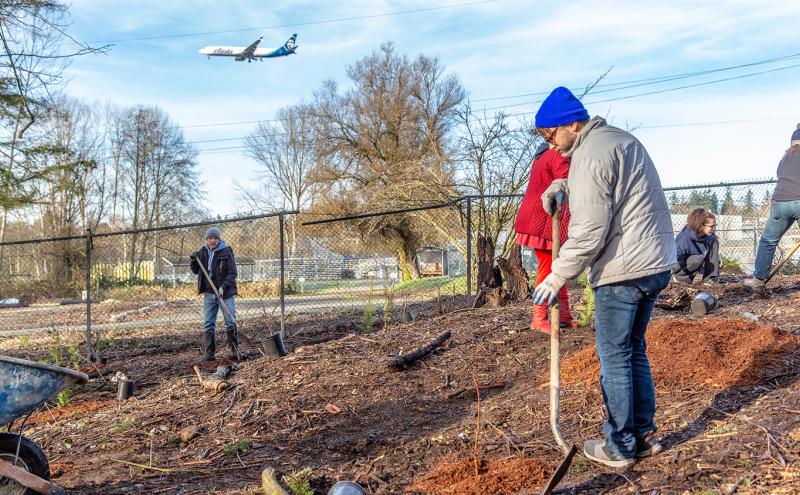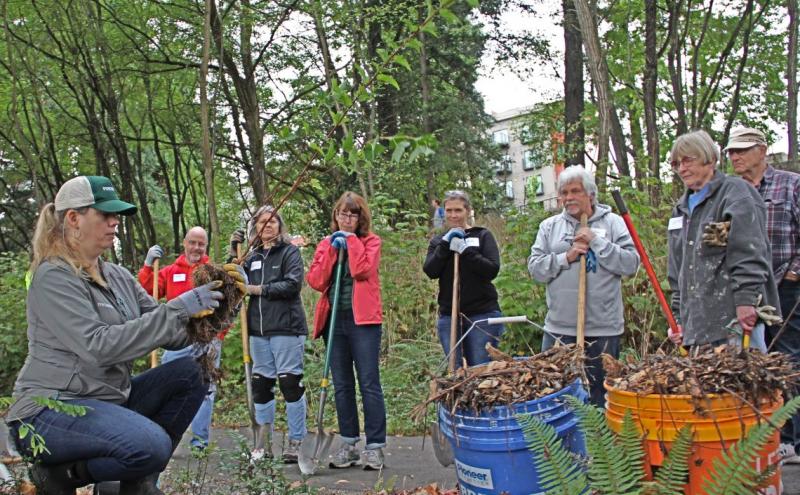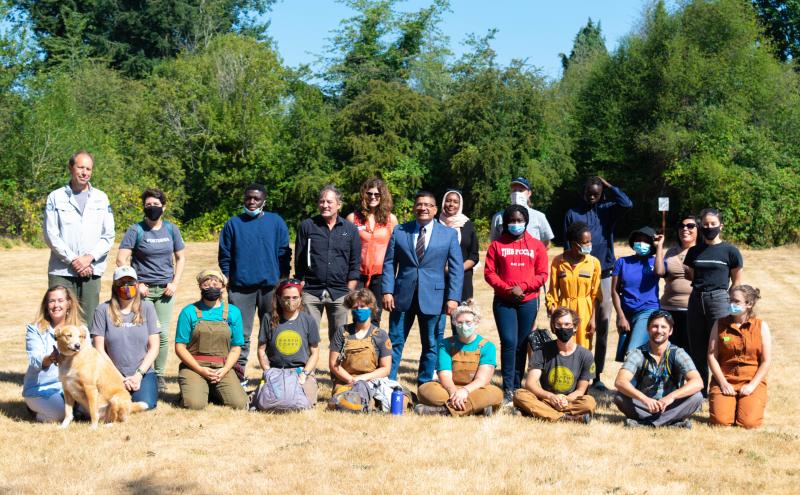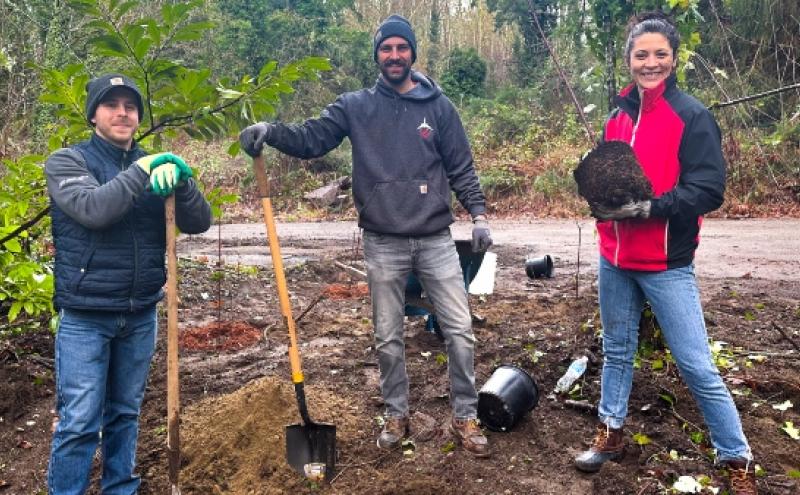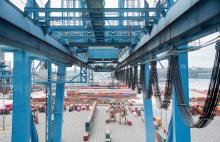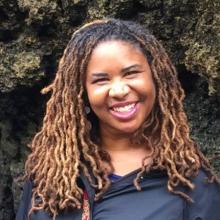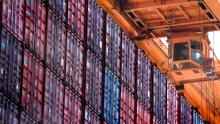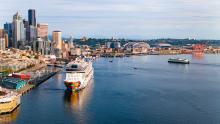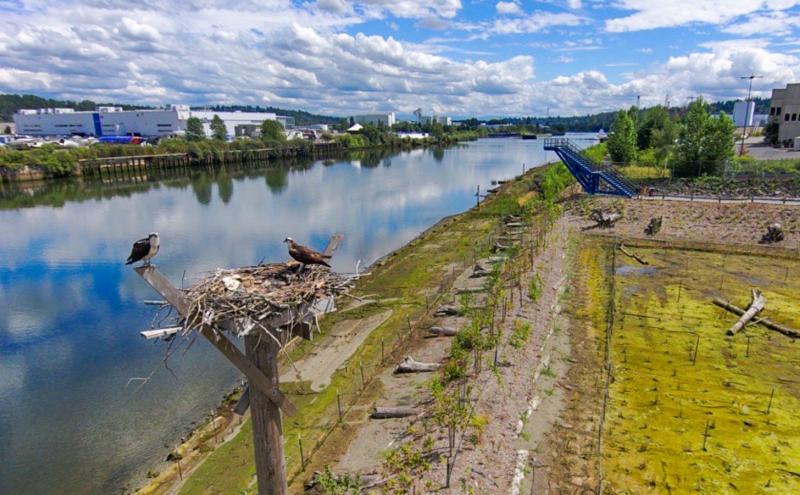
By Mallory Hauser and Cathy Swift
As you gaze out the window, consider the relationship between nature, buildings, and the daily needs of a thriving region. Supporting a thriving local economy that creates job opportunities while maintaining a healthy ecosystem, building wildlife habitat, and delivering high quality of life is a delicate and essential balancing act that community members expect and demand.
Managing this balance is a top priority for the Port of Seattle, and something we think about in everything we do. The Port’s official mandate is to support and boost economic development through the airport, seaport, and trade. The Century Agenda synthesizes the Port’s values and how they are applied to fulfilling these objectives when it comes to the environment around us:
We are committed to creating opportunity for all, stewarding our environment responsibly, partnering with surrounding communities, promoting social responsibility, conducting ourselves transparently and holding ourselves accountable. (Source: Port of Seattle Century Agenda)
The Port recognizes the importance of our natural resources, and we prioritize and practice environmental land stewardship. What exactly does this mean?
Practicing land stewardship means embracing an approach that considers the needs of all elements of an ecosystem like trees, water, quality of life, and homes for people and animals.
That’s the challenge and balancing act that the Port Commission has committed to by establishing five land stewardship principles that protect both people and the planet.
Practice into policy
To establish standards in environmental work across the Port, an Environmental Stewardship Order passed by the Port Commission in July 2023 documents these principles across all Port facilities and properties.
- Use a comprehensive approach to environmental land stewardship, including trees, forests, and other habitat
- Maximize opportunities to increase trees, forest, and other habitat as part of infrastructure planning and design
- Apply an equity and environmental justice lens to all infrastructure and land use decisions
- Support community partnerships and leverage inter-governmental coordination and Port funds to catalyze stewardship processes and outcomes
- Use a holistic approach to ensure trees, forest, and other habitats are healthy and self-sustaining
Stewardship in practice
“Port staff are already undertaking impressive land stewardship practices on Port properties, from organic landscaping at our parks to removing invasive species and planting trees in urban forests,” said Port of Seattle Commission Vice President Toshiko Hasegawa. “This order institutionalizes Division-specific practices into Port-wide policy. The order also provides direction for future decision-making and ensures that environmental land stewardship activities will include an equity lens.”
Responsible stewardship is not a new philosophy at the Port, as exemplified by the historical examples below. But this new order formalizes the commitment to serving both people and the planet.
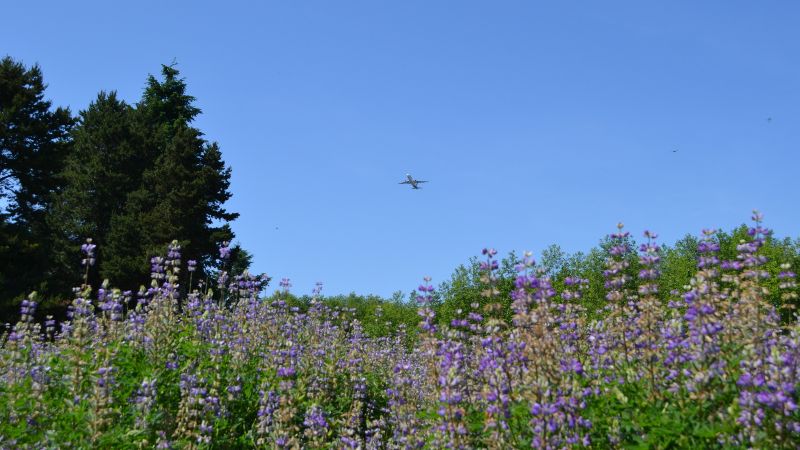
Protect and restore habitat
The Port has been building and sustaining habitats for fish and wildlife for decades. These are just a few examples:
- Creating, restoring, or enhancing 177 acres of wetlands and buffers near Seattle-Tacoma International Airport (SEA),
- Planting approximately 350,000 native trees and shrubs around SEA airport
- Planting more than 45,000 native trees and shrubs along the Duwamish Waterway and Puget Sound
- Enhancing two miles of salmon habitat in Miller and Des Moines Creeks
- Creating 69 acre-feet of floodplain storage on the Green River
- Restoring more than 35 acres of estuarine and marine habitat
- Supplement forest restoration with alternative habitats such as pollinator gardens that support 500,000 resident honey bees and other insects
- Cleaning up a Superfund site on the Duwamish River and turning it into a park and new wildlife habitat with a great deal of collaboration with community and local government partners. The largest habitat restoration on the Duwamish River in a generation includes restoring salmon habitat and osprey nesting boxes.
- Restoring 14 acres of emergent marsh, mudflat, and riparian habitat
- Creating 2,050 linear feet of shallow and deep subtidal shoreline habitat
- Building more than 3,210 feet of shoreline
- Planting 20,000 native plants
Tall trees can impact flight paths at an airport and the Federal Aviation Administration (FAA) requires removal of any objects, including trees, to maintain safe and efficient access to the airport. To comply with FAA regulations, the Port removed 750 trees and mitigated those impacts by restoring almost 20 acres of forest and other habitat, including removing existing invasive vegetation and planting 3,500 trees and 18,000 understory shrubs at Seattle-Tacoma International Airport (SEA).
“We want to do more than just plant trees to increase canopy. We are looking at ways to protect and enhance existing habitat and offset development impacts to ensure our forests and other habitat remain healthy and self-sustaining,” says Chipper Maney, Port Environmental Program Manager.
When trees must be removed, there’s a requirement to offset those impacts by protecting existing tree canopy, planting additional trees, and replacing invasive vegetation with native understory plants.
In some cases, like Hillgrove Cemetery in SeaTac, the Port works with property owners to replace cleared trees onsite with low-growing varietals that won’t grow into navigable airspace. Or to conduct replanting at sites that do not impact airplane flight paths.
The Port of Seattle is also working with partners to protect and restore forest and other habitat in adjacent communities. The Port hosts many community planting events near Port facilities. One example was a February 2023 event where community members removed half an acre of invasive ivy and blackberry, replacing them with 150 native trees and 750 native understory shrubs.
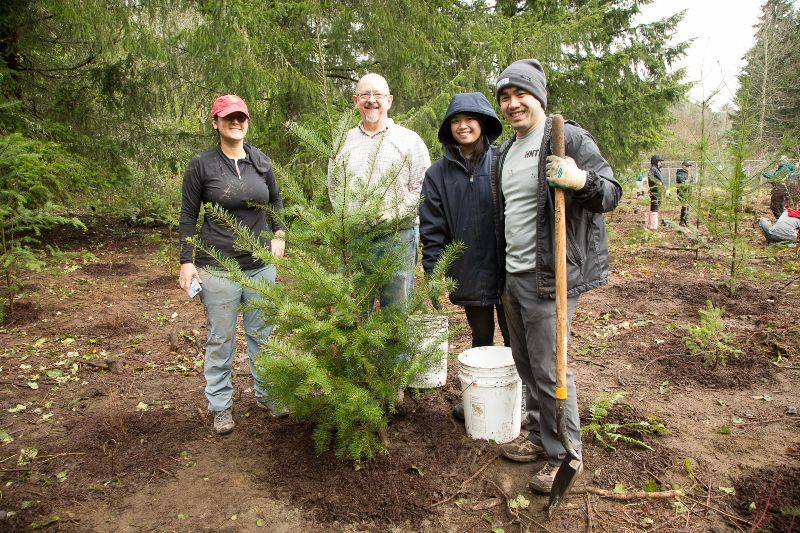
Quality of life for all
Equity-based partnerships are at the center of the Port’s ongoing work to reduce environmental impact and improve the quality of life for communities near Port facilities, particularly SEA Airport.
The South King County Community Impact Fund Environmental Grants Program funds community-led environmental projects that reflect the rich diversity in South King County and improve the environment and access to green space in communities surrounding SEA Airport. Through funding and partnerships with community-based organizations who define their community needs, the Port has made these investments to enhance livability, improve green spaces, and restore forests.
These community-initiated projects were funded in 2023:
- Building a community garden and cleaning up a Tukwila park to grow culturally relevant food for Congolese immigrant and refugee families
- Restoring forested land in Normandy Park to remove invasive species, plant trees, and teach community members forest restoration techniques
- Installing an off grid solar system at a community garden in Burien to teach the community about renewable energy and increase food production
- In Burien, building a new patio garden, creating habitat for pollinators and birds, and teaching community members to increase food production
- Tree planting at Pat Ryan Field in SeaTac by a local rugby club
Centering sustainable design
In 2020, the Port approved the Sustainable Evaluation Framework to integrate environmental and sustainability planning into the initial design phases of large infrastructure investments. The Environmental Land Stewardship Order continues that work by prioritizing criteria for environmental land stewardship early in project planning and design.
Several construction projects have been evaluated through this sustainability lens and these sustainability investments were built into the new facilities from the beginning stages:
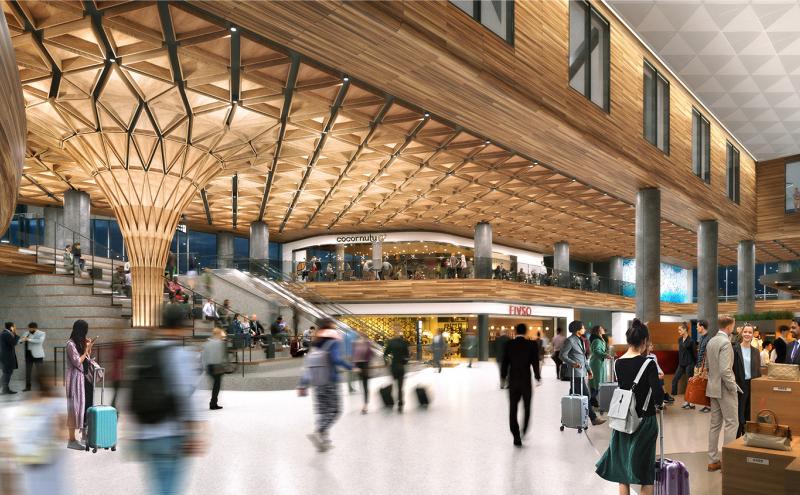
C Concourse Expansion at SEA Airport
This project expands the area between C and D Concourses by almost 300% to add dining and retail spaces, Interfaith Prayer and Meditation Rooms, performance space for arts, a Nursing Suite, an Alaska Airlines Lounge, and office space. And it includes major sustainability features that will reduce 557 tons per year of scope 1 and 2 emissions, roughly equivalent to the weight of three 2,000 square foot houses including concrete foundations and their contents:
- Potential LEED Silver or Gold certification
- 689kW Solar Photovoltaic panels (equivalent to 60 households’ annual energy use)
- All-electric cooking and water heating
- Heat pumps for temperature control
- Low carbon concrete
- Reduced food waste by donations to local agencies
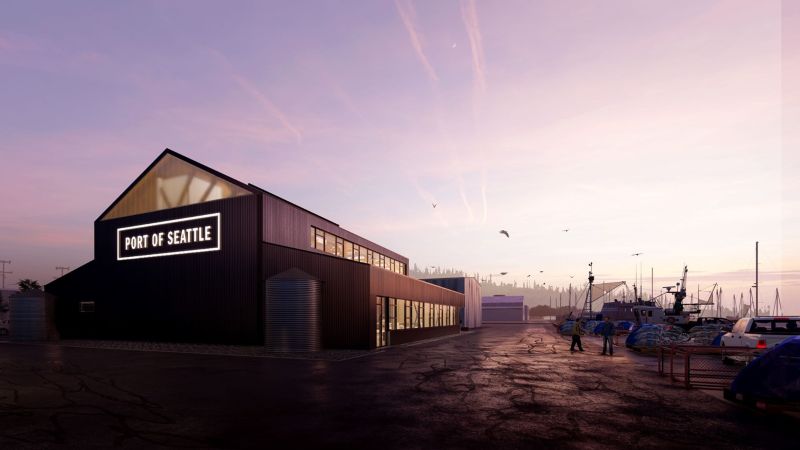
Maritime Innovation Center (MInC)
Operated in partnership with Maritime Blue, the MInC will host emerging companies that are working to solve maritime industry problems, increase the maritime workforce, and advance blue economy opportunities around the world. Sustainability features include:
- Living Building Challenge (LBC) Certifications
- Net positive energy through high-performance envelope, photovoltaic energy production, and ground source heat exchange
- Natural ventilation, lighting, and views
- Salvaged materials
- Rainwater capture and stormwater treatment
- Grey and blackwater treatment
- Red list-free materials
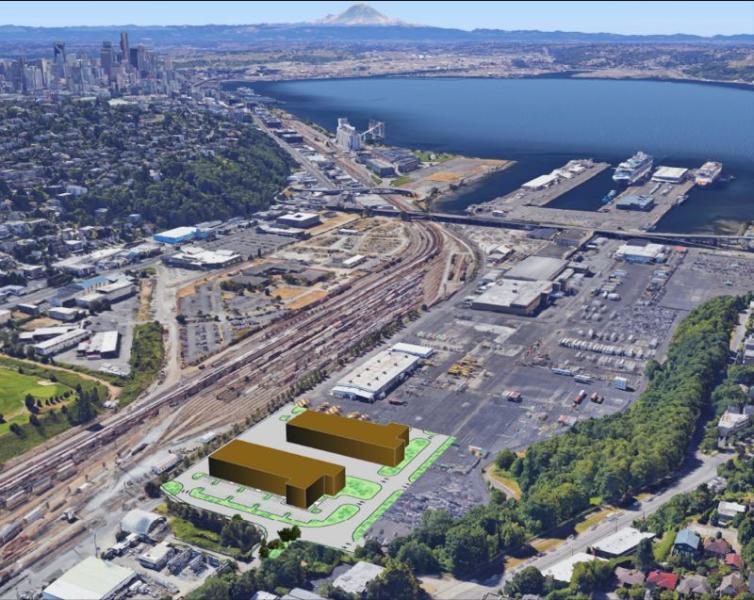
T91 Uplands Development Phase I
Near the Ballard/ Interbay MInC, this project will add approximately 400,000 square feet of building space to support the maritime and fishing industries. Sustainable design elements include:
- LEED Silver Core and Shell rating
- 95kW Solar panels that save the equivalent of 10 households’ annual energy use Energy-efficient HVAC system
- 46 trees planted around the building
- A bike lane and pedestrian portal to encourage alternative transportation
The Port remains committed to caring for the natural resources in our region, and these principles will guide the Port towards creating a more sustainable future for everyone.

